Menu
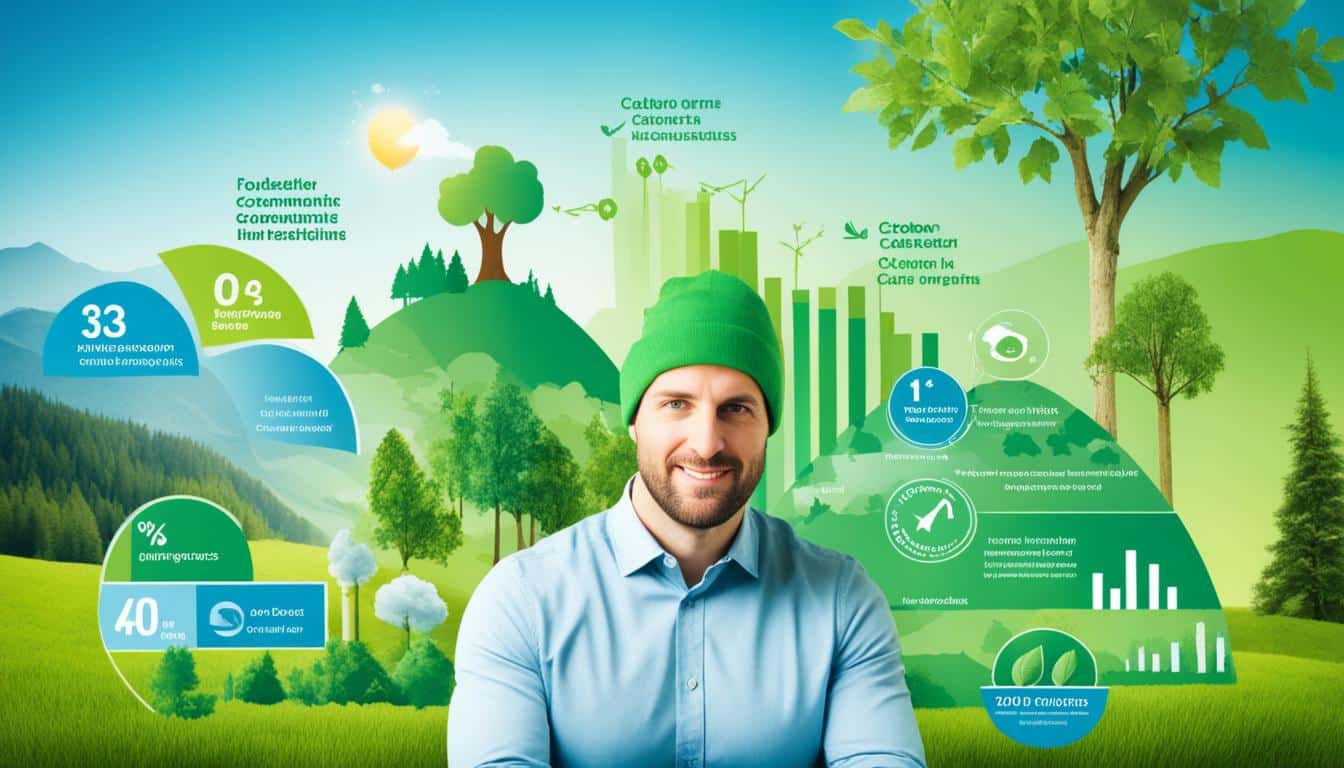
In early 2022, big news in energy was all about companies buying clean energy. These purchases, known as power purchase agreements (PPAs), help companies cut their carbon footprint. This matters because greenhouse gases are still affecting our climate. Companies are working on their direct emissions, energy used from elsewhere, and emissions from business travel and their supply chain. They are also using things like carbon offsets to balance out their remaining emissions.
For example, TD Bank is making carbon offsets in North America. Since 2007, Google has been totally committed to being carbon-neutral, as has Microsoft, which adds carbon offsets to an internal carbon tax. Even The Walt Disney Company uses a carbon tax and carbon offsets to reach its green goals. The construction of Crossrail/Elizabeth Line managed to lower its carbon emissions by 15%. This shows how adopting eco-friendly practices can significantly shrink our impact on the environment.
It is important to understand carbon footprints to fight climate change. They show how much greenhouse gas (GHG) emissions come from what we do, like making, moving, and using things. By knowing our environmental impact, we can plan to produce less emissions.
Calculating carbon footprints is very important. It gives a clear way to see our environmental effect, so people, companies, and governments can check the harm they do. Tools from groups like the Nature Conservancy and US EPA help find where we can do better in managing our carbon use.
Emissions are put into three groups for better handling:
Carbon emissions from these scopes give us a full look at an organisation’s effect on the environment. Knowing and correctly measuring these emissions is key to making good plans to use less carbon and meet green goals.
| Emission Scope | Examples | Impact |
|---|---|---|
| Scope 1 | Company vehicles, onsite fuel combustion | Directly controllable by the company |
| Scope 2 | Purchased electricity | Indirect but influenced by energy consumption choices |
| Scope 3 | Supply chain activities, business travel | Widespread and hardest to control, often the majority of a company’s GHG emissions |
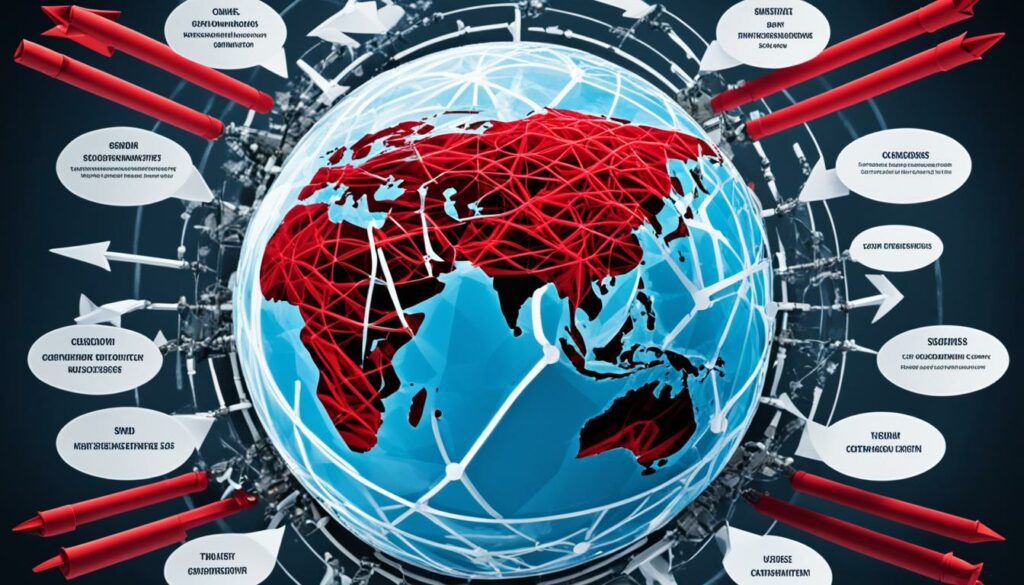
Scope 3 emissions are key to understanding a company’s full carbon impact. They are the indirect emissions across the company’s supply and production chain. In places like the U.S. and China, these emissions make up more than 80% of the total.
These emissions are all indirect GHG emissions except for Scope 1 and Scope 2. They come from things like third-party services, travel, and getting rid of waste. Only a small percentage of these emissions were reported by large U.S. companies in 2013.
It’s hard to measure Scope 3 emissions accurately. Reports often miss significant data, meaning the real numbers could be much higher. For example, 56 tech companies showed a big difference in their reported and actual emission levels. This was due to incomplete reporting boundaries, mixed reporting standards, and what activities were included.
To address Scope 3 emissions, companies need good carbon accounting and clear targets. They need to work closely with their entire value chain. This means getting reliable data on emissions and encouraging eco-friendly practices from suppliers.
They should adopt recognised methods and standards like the Life Cycle Analysis and ISO 14060.
Efforts to reduce emissions need to consider global agreements like the Kyoto Protocol and the Paris Agreement. These set the scene for international policies and the rules for reporting emissions.
“Emission data disclosed in corporate reports can omit half of the total emissions.”
Being open and using good reporting methods helps close the gap between reported and actual emissions. This paves the way for real emission reductions.
The push for ESG investment is changing how we manage carbon. ESG KPIs are now key, making investors urge companies to reveal their climate actions. They want transparent plans on managing carbon too.
ESG KPIs guide how investments are made. They help manage risks while cutting down on carbon. Setting clear goals for reducing emissions is a major step.
This investor push is changing investment paths. It’s steering money towards green solutions and companies that aim for zero carbon. All this is to make sure investments are done wisely.
Services that help with managing climate risks are very useful. They aid in making votes that matter. This is part of a bigger strategy to both invest well and protect the environment.
In the fast-changing world of carbon management, the fear of too much analysis is a real danger. Often, companies get stuck trying to get the perfect data. This can stop them from actually reducing their emissions. It’s very important to gather correct data, especially for Scope 3. Yet, it’s just as critical to take active steps towards your climate goals.

The task of collecting carbon data is very complex. A recent survey showed that almost all electricity and 80% oil companies address climate change in their official filings. Yet, only 15% of US insurers do, which has led to calls for better disclosure. The lack of data, particularly in fields like insurance, highlights a major hurdle.
Insurance firms making over $500 million a year must annually reveal their climate change financial risks since May 2010. Even so, there’s a big gap in Scope 3 data because it’s spread out throughout an organisation’s supply chain.
Finding the right balance between gathering carbon data and cutting emissions quickly is a key challenge. The SEC tells public businesses to reveal their climate impacts directly and indirectly in their reports. This has encouraged sectors to find a middle ground. For example, independent agencies like Standard & Poor’s 500 (S&P 500) have created a global low-carbon index to meet the investors’ need for green investments.
It’s also important to understand the limits of collecting data. Only about 10 states in the US have plans that fully consider carbon cutting and fairness. A more connected effort could help these states better reach their climate goals. This would ensure the data collected actually leads to real emissions decrease.
To dodge the analysis trap, the relationship between data and action is crucial. A successful carbon management plan must focus on gathering good data and acting quickly towards meeting climate aims.
It’s vital for organisations to know the difference between direct and indirect carbon emissions. They need to focus on reducing the impact of both their operations and their supply chains. This tailored approach helps reduce their carbon footprints effectively.
Carbon footprints change a lot depending on the industry. The electric power industry mostly has direct emissions, while the trade industry’s carbon footprint is mostly indirect. This points out the importance of specific strategies for different sectors.
| Industry | Direct Emissions (%) | Indirect Emissions (%) |
|---|---|---|
| Electric Power Generation | 97.8 | 2.2 |
| Wholesale and Retail Trade | 1.3 | 98.7 |
Taking a broader look, the power generation industry is a major player in carbon emissions, contributing around half. Transportation and manufacturing make up the other big chunk. This shows that most emissions in these sectors come from direct fuel use.
To reduce carbon emissions effectively, detailed ESG reporting is needed. This divides emissions into three scopes. Scope 1 is direct, Scope 2 is from bought electricity, and Scope 3 includes all other indirect sources.
Companies must also focus on their Scope 3 emissions, which can be a big part of their total emissions. This requires working with their supply chains to accurately measure their carbon impact. Tailored strategies and action plans are crucial for decreasing the overall carbon footprint.
The journey of Microsoft sustainability teaches us a lot. It shows why a company must think about its whole carbon strategy. Microsoft aims to cut its suppliers’ emissions in China by 55% before 2030. This shows they’re serious about their impact.

Key to Microsoft’s carbon-cutting success is upgrading and making things better. They’ve saved a lot of energy this way, roughly equal to 25,027 tons of carbon less in the atmosphere.
They’re also heavy investors in fighting climate change. Microsoft is using $600 million from their Climate Innovation Fund to innovate. They’re working on green energy, improving how things are made, and protecting nature. They’re not just focusing on carbon but also on saving water for millions.
Fixing how they deal with waste is another priority. They want to stop 12,159 metric tons of waste from going into landfills. By 2030, they aim to recycle 90% of what they throw away. This is setting a high standard in the business world.
Microsoft doesn’t just talk about saving the earth, they also do something. For instance, they are protecting more land than they are using. They’ve promised to look after a big part of their land and keep it safe for nature.
Plus, using their smart cloud has been a big win. Their cloud services have led to huge energy savings. They’re proving that using the latest tech can make a big difference in fighting climate change.
Microsoft shows us a very smart way to tackle carbon issues. Energy saving, investing in new ideas, and taking care of our environment all matter a lot.
| Key Initiative | Impact |
|---|---|
| Carbon Emissions Reduction | 55% reduction by 2030 for suppliers in China |
| Energy Savings | 27.9% through retrofitting and optimisation |
| Climate Innovation Fund | $600 million allocated to sustainable solutions |
| Volumetric Water Benefits | 15.6 million cubic metres by 2030 |
| Waste Diversion | 12,159 metric tons diverted from landfills |
| Land Protection | 12,000 acres designated as protected in 2022 |
| Intelligent Cloud Services | 22% – 93% energy efficiency improvement |
Google is at the forefront of tech and innovation. It aims to be carbon neutral by 2030. This involves using lots of renewable energy and offsetting carbon.
Google wants all its operations to run on clean energy 24/7. They hit a big milestone in 2017 by using 100% renewable energy globally. They also work on making their energy usage very efficient with a goal of 1.0 PUE.
They’ve made big investments in renewables, buying over 3 GW of energy from 26 projects. This shows in a $3.5 billion USD investment. They are now the biggest buyer of clean energy among companies. In Europe, their agreements brought 1 billion euros to renewable energy.
To further tackle their emissions, Google invests in carbon offset strategies. This includes nature and tech solutions. Their aim is to lower all types of emissions by half by 2030.
In 2022, Google’s carbon intensity was 9.13 tCO2/million USD. They work hard to reduce this number. Google supports new energy ideas, teams up with others, and helps shape energy policies. They also share their knowledge to promote change.
Google’s wide view on fighting climate change combines clean energy and smart offset plans. They know staying carbon neutral needs constant effort, new ideas, and teamwork. This approach shows a real path to a greener future.
Supply chain management plays a big role in lowering an organisation’s carbon footprint. Companies use smart tactics for supply chain carbon management. This helps them reduce their impact on the environment and become more sustainable.
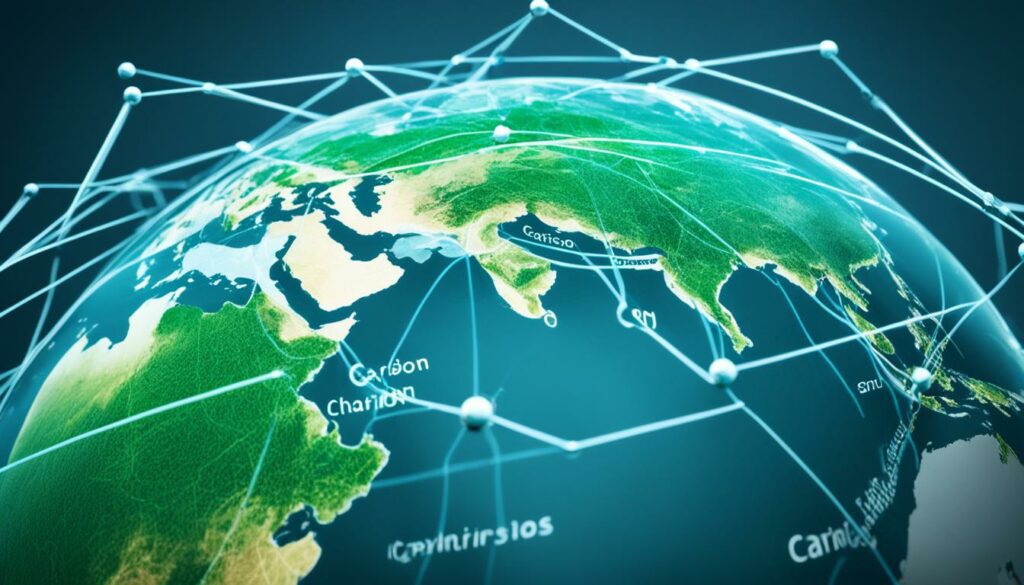
One key part of supply chain carbon management is finding where carbon is produced the most. For example, in 2016, Ajinomoto found that most of its emissions came from what it bought, creating 7.7 million tonnes of CO2. It shows the importance of finding these big emission areas to work on reducing them.
Working closely with suppliers is crucial to cutting down on a company’s carbon footprint. Braskem is a good example. They’ve put a lot of money into sustainable solutions. For example, their $290 million plant makes 200,000 tonnes of polyethylene a year from green sources. They also make sure their suppliers follow green practices, helping reduce the carbon footprint of the whole supply chain.
| Company | Initiative | Impact |
|---|---|---|
| Ajinomoto | Recycled PET bottles | Reduced virgin plastic usage by 2,000 tonnes annually |
| Braskem | Green polyethylene production | Negative carbon footprint certification |
Collaboration with suppliers not only cuts down on carbon footprint but also leads the way for more sustainable practices in the industry.
Recently, corporate clean energy buying has been major news, especially in Q1 of this year. Companies are making big moves to purchase renewable energy through agreements, drawing national interest. It shows that big businesses are taking their climate responsibilities seriously.
Many companies are focusing on reducing Scope 2 emissions, which come from creating electricity offsite. By doing so, they lower their environmental impact. However, they also need to tackle Scope 1 emissions from their own fuel use and Scope 3 from travel and supply chains.
Valuable firms are finding new ways to balance out their emissions. For example, TD Bank is now carbon neutral by buying offsets within North America. Microsoft and Walt Disney both use carbon offsets and taxes to support green technology and meet their environmental promises.
| Company | Strategy | Achievements |
|---|---|---|
| Commitment to 100% renewable energy since 2007 | Leader in reducing carbon emissions | |
| General Motors | Innovative carbon offsets and reduced carbon intensity | Carbon intensity down by 11% between 2010-2014 |
| Dalmia Bharat Cement | Commitment to 100% renewable power by energy day at COP22 | Currently sources 7% renewable electricity |
This trend in buying renewable energy supports big climate goals. More than 50 companies, worth USD 15 trillion, back a renewable energy plan. And over 83 corporations aim for 100% green electricity through the RE100 project.
The creation of the REmade Index by IRENA and the Coalition for Action is helping. It’s pushing companies to do better with renewable sources. Clearly, the rise in clean energy buying by companies is helping to shift to more sustainable power, fighting climate change.
TD Bank leads the way in green banking. It has a detailed carbon strategy. This strategy aims to make the bank totally carbon neutral.
TD Bank works hard to reduce its emissions. It focuses on emissions from electricity use. It’s also reducing emissions from its own fuel and from activities like business travel and the supply chain.
This bank really stands out for buying more renewable energy this year. They made big deals to use more clean energy. These deals are helping the bank move towards using only clean energy.

TD Bank’s work in cutting carbon is similar to big companies like Google and Microsoft. Google has been carbon neutral for years by using more clean energy and changing their way of working. Microsoft uses taxes to support clean energy projects. Disney also does its part by buying high-quality carbon offsets.
TD Bank also checks for possible climate risks a lot. This helps them be ready for any problems that could come from climate change. They are part of a big program working on this.
In the end, TD Bank’s efforts show their deep commitment to being green. They lead by example in the banking world, pushing others to follow their steps in protecting the planet.
Looking at different case studies helps us learn about managing our carbon footprint well. We see what works in reducing carbon and improving the environment. These studies show us different methods used by various industries. They help us understand the best strategies to lower our carbon impact.
We find that some strategies for cutting carbon use are popular. For example, in China’s building sector, using less energy is a big focus. They use special methods to measure how much carbon is produced. Also, building things uses less energy than making or using them.
Another common step is to follow a certain rule when checking carbon from different building stages. Plus, high-tech tools, like satellites, help check on forests. These techs are big in finding ways to use less carbon and do better for the planet.
Stories from places like the Amazon and Fujian in China show us what’s possible in lowering our carbon use. Brazil’s work to cut down cutting trees by 60 to 70 percent since 2004 is huge. It proves that the right plans really do help the planet.
But, the Amazon has faced big troubles from droughts, hurting plants and trees. This reminds us that ecosystems need to be strong. It’s key for businesses to act on ways to lower carbon and help the environment. Also, the serious fires in the Arctic show why we need new plans to fight climate change.
| Study | Strategy | Impact |
|---|---|---|
| Brazilian Amazon | Deforestation Reduction | 60-70% decrease in deforestation |
| Fujian Province Construction | Emission-Coefficient Calculation | Insights into emission trends |
| Arctic Region | Advanced Remote Sensing | Improved carbon footprint monitoring |
These success stories underline the value of using common steps to cut carbon. Learning from them, companies and groups can build better plans. This helps everyone do more for our planet.
Today, there is a big problem with too much carbon in the air. We need smart and clear ways to cut this down. Our huge impact on the Earth, mainly through carbon, keeps growing. So, just knowing how much we pollute isn’t enough anymore.
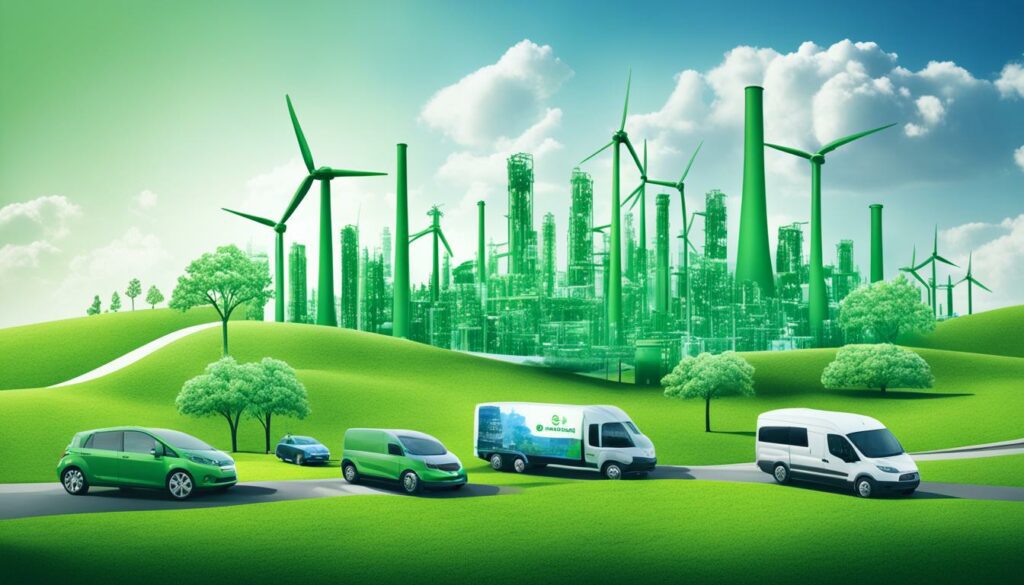
To fight the rising carbon levels, we must make our methods better. Part of an organisation’s carbon comes from things not directly in their control (like product use). So, putting a lot of effort into these areas is key. The Paris Agreement pushes us to keep getting better at this every five years.
We’re switching how we measure, making it sharper. Now, we look at the actual work a company does, rather than just how much money they spend. This means knowing exactly where emissions come from. With this detail, we can cut emissions for real and show it with strong proof.
Looking at how good carbon offsets are is very important for businesses. They can really help reach big environmental goals. For example, in the UK, a special programme has cut emissions a lot. It’s like stopping over 2,000 plane flights between London and New York.
Using new tech, like smart meters and better heaters, has also helped cut down on carbon. These steps show us the power of using carbon offsets right. They help balance out the pollution we can’t avoid, in a way that’s good for the Earth.
To wrap up, we must do more than just guess at our carbon problems. With better methods and using carbon offsets wisely, we can really make a difference. When companies work hard at accurate counting and real cuts, we’re on the right path to fight climate change.
People are more aware of environmental problems today. This makes greenwashing risks and the need for clear, honest environmental reports very important. Around a third of people look at how green companies really are. If organisations lie about being eco-friendly, they can get in legal trouble and lose customers’ trust. For example, since 2016, over 20 greenwashing cases have gone to court in countries like the US, Australia, and France.
Having real and honest environmental reports is key. Companies should share detailed sustainability efforts. But, some, like Nestlé, have faced criticism. They said they want all their packaging to be easy to recycle or reuse by 2025. However, people felt their plan wasn’t clear enough and lacked specific goals. This shows we need clear and meaningful data. On the other hand, Klean Kanteen is doing well. They not only measure their greenhouse gas emissions but also share a report every year. They are setting a great example by being very open.
Now, laws are getting tighter. The US plans to review what companies can say in their ads about being green. They may change rules about “green” or “sustainable” claims. This change shows companies must be honest or they could be seen as greenwashers. Since there’s no clear rule on what “green” really means, companies must tread carefully. They need to follow the law and be clear about their efforts.
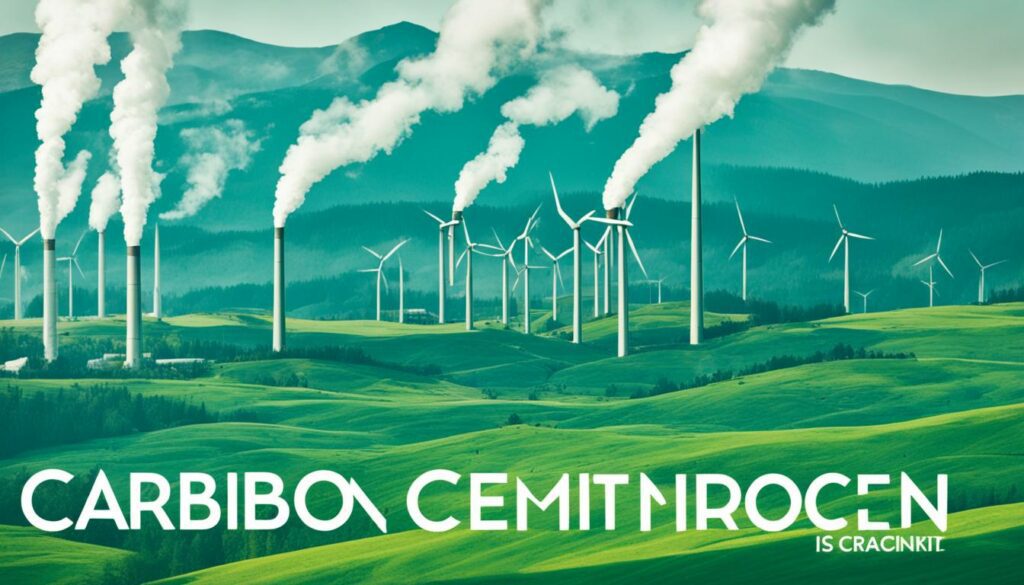
The risk of being caught for greenwashing and facing new laws demand a focus on honest reports. Nestlé and Klean Kanteen show us the importance of being transparent. As the world keeps a closer eye on what companies are really doing for the planet, being truthful is more important than ever to avoid greenwashing.
| Case Study | Key Actions | Outcome |
|---|---|---|
| Nestlé | Aiming for 100% recyclable packaging by 2025 | Criticised for vague goals, highlighting the need for clear and credible reporting |
| Klean Kanteen | Annual brand impact report, GHG emissions tracking, and carbon neutrality | Established as a benchmark for environmental transparency |
It’s vital for companies from all sectors to tackle climate change together. They help to lessen environmental harm and work for a lasting planet. A big step is the rise in climate actions by top companies. Their self-commitments to fight climate change have boosted from 23% in 2019 to 42% in 2022. This shows a stronger dedication to green efforts and real steps to cut global warming.
Big names like IKEA and Microsoft are leading in green and anti-carbon steps. IKEA is aiming to decrease its greenhouse gas release throughout its chain. This will help society match the goals of staying under 1.5°C of warming. Meanwhile, Microsoft is going into negative carbon territory. They are buying more carbon credits than they produce. This sets a great role for other companies to follow. The work of these companies shines a light on the many ways companies can help fight climate change.
The future calls for going beyond what’s being done now in climate actions. The Science Based Targets Initiative wants to guide companies to do more in fighting climate change. New ideas, like asking companies to do even more than they normally would, are also becoming popular. These encourage companies to do better. Moving forward means not just following current rules but also finding new ways to be greener and take care of the climate.
Carbon footprint case studies look closely at how organisations measure, reduce, and handle their carbon emissions. They share what works in checking on environmental impact, enhancing sustainability, and using less carbon to tackle climate change.
A carbon footprint is key because it tells you the total greenhouse gases an organisation, event, product, or person makes. Knowing this helps everyone find good ways to stop climate change across the world.
Scope 1 emissions are what an organisation makes directly. Then, Scope 2 emissions are made indirectly, like when they buy energy. Scope 3 is all other indirect emissions, even those of companies they work with, before and after.
Scope 3 emissions often make up most of an organisation’s carbon footprint. They’re not easy to measure but are vital to shrinking an organisation’s whole carbon effect and meeting big carbon cut goals.
ESG KPIs matter more and more to investors. They show how much a company cares about lasting, good business and eco-friendly actions. Doing well in ESG can make a company more interesting to investors wanting to make money the right way.
‘Analysis paralysis’ is when getting the best data stops companies from acting fast to cut carbon. It’s a warning to not overthink and to balance knowing enough with taking action on climate issues in time.
Direct emissions are from the organisation’s own sources, whereas indirect emissions come from activities but at places not owned by it. Different industries, like manufacturing or technology, have their unique carbon challenges. This means they need their unique plans to reduce carbon.
Microsoft is using its own carbon tax and backing renewable energy to reduce its carbon. It aims to make a smaller environmental impact and become better for the planet.
Google is serious about being carbon neutral with lots of clean energy purchases and carbon offset use. These steps show their deep commitment to the planet and tackling climate challenges.
Looking at and working on the supply chain can really cut an organisation’s carbon use. By finding and reducing carbon-heavy areas with suppliers, the big picture emissions can be brought down.
Corporate buying of non-utility clean energy is on the rise through agreements. This shows a push by companies to lessen their carbon footprint by securing their clean energy sources.
TD Bank works hard to be carbon neutral by buying carbon offsets and doing green banking. This strategy shows how serious they are about being green and causing less harm to the planet.
Carbon reduction successes often focus on renewable energy, saving energy, and looking at the whole supply chain. These lead to positive environmental changes and show how different businesses can make a difference.
Good methods for cutting emissions include careful measuring, new tech for saving energy, and using carbon offsets. These methods are core to staying eco-friendly.
Avoiding greenwashing and being open about eco-actions is key to keeping trust and being truly green. Laws and truth about efforts matter for real eco-progress and trust from others.
Companies help fight climate change by lowering emissions, using more green energy, and being eco-friendly. This improves their role in supporting the planet and doing more for a sustainable future.